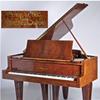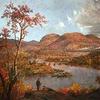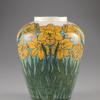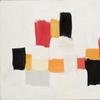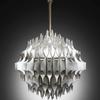"Odds Were Against Me" Exhibition Features Renowned 20th-Century Women Sculptors
- June 14, 2020 16:21
The Cape Ann Museum, in Gloucester, Massachusetts, pays special tribute to renowned women artists in its exhibition, Odds Were Against Me, featuring works by Anna Vaughn Hyatt Huntington (1876–1973) and Katharine Lane Weems (1899–1989).
The exhibition was organized to recognize the 100th anniversary of American women winning the right to vote with the passage of the 19th Amendment. Other featured artists include Cecilia Beaux, Theresa Bernstein and Emma Fordyce MacRae. The museum is currently closed due to covid-19 precautions and the exhibition will be ongoing; check with the museum for updates.
“This yearlong showcase of works by Weems and Huntington is integral the museum’s commitment to featuring the inspiring work of women artists both past and present through special and rotating gallery installations,” said the Cape Ann Museum’s Director Oliver Barker. “Weems and Huntington are part of a long line of Cape Ann artists whose work is fundamental to the compelling story of Cape Ann’s evolving artistic and cultural history which resonates with visitors young and old, from the local community and beyond.”
Huntington’s larger than life-size bronze sculpture, Diana of the Chase, anchors the exhibition, with selections of Weems’ vivid animal sculptures from the museum’s collection offering a contrast in subject and scale. A full-length oil portrait by Marion Boyd Allen (1876-1973) of Huntington at work in her studio is paired with an intimate painting of Weems done in the 1920s by Boston and Manchester artist Charles Hopkinson (1899-1989).
Weems was one of this country’s most accomplished sculptors of the 20th century and a major figure on Boston’s North Shore for many years. She is best known for her larger-than-life size animal pieces, many of which can be found in and around Boston, including the bronze Dolphins of the Sea (1979) at the New England Aquarium.
Weems studied with Charles Grafly at the School of the Museum of Fine Arts, Boston, and with Anna Hyatt Huntington, George Demetrios and Brenda Putnam. In 1928, she was awarded the Philadelphia Academy of the Fine Arts’ prestigious George E. Widener Memorial Gold Medal for her work Narcisse Noir (1926). She maintained a home and studio in Manchester (known as The Chimneys) and was life-long friends with fellow sculptor Walker Hancock. The name of the
exhibition is based on Weems’ memoir, Odds Were Against Me, which provided insights into the challenges that she and other women or her generation faced as they struggled to gain footholds in the arts.
Huntington was born in Cambridge, MA, a daughter of Alpheus Hyatt, a zoologist and paleontologist, and Audella Beebe Hyatt, a watercolorist. The Hyatts purchased a summer house in the Annisquam section of Gloucester in 1878 where Alpheus ran a biological laboratory and school.
For many years, Huntington maintained a summer sculpture studio on the property. While she would study for a time under Henry H. Kitson in Boston, and later with Hermon A. MacNeil at the Art Students’ League in New York, Huntington thought of herself as a self-taught artist, inspired by her older sister Harriet who was also a sculptor.
In 1902, Huntington moved to New York City to pursue her career, traveling from there to France in 1907. By the 1910s, she had established herself as one of this country’s most respected sculptors, attracting commissions for such works as her well-known depiction of Joan of Arc (1915-1918), versions of which are installed in Blois, France; Québec City; San Francisco; New York City; and Gloucester. In 1923, she married Archer Huntington and worked on what is now known as
Brookgreen Gardens in South Carolina. She is best known as a figurative sculptor, having created animals, equestrian monuments, fountains and other works for gardens.
“The Cape Ann Museum is fortunate to have a strong collection of artwork and artifacts in its holdings related to women, now and in the past,” said Museum Curator Martha Oaks. “While many of these items are typically on display throughout the museum, this year as people across the country recognize the 100th anniversary of women’s suffrage, we’re enjoying calling them out to our visitors and exploring the myriad of stories they can tell us about women’s abilities and achievements. Anna Vaughn Hyatt Huntington and Katharine Lane Weems were two extraordinary artists who excelled at a time that wasn’t always welcoming of women. We’re very proud to be showcasing their work.”
Cape Ann has long been recognized as one of this country’s oldest and most important art colonies and the collection of the Cape Ann Museum contains examples of works by many of the artists who came to Cape Ann, including Marsden Hartley, Cecilia Beaux, Nell Blaine, Edward Hopper and John Sloan. At the heart of the Museum’s holdings is the single largest collection of works by early 19th century artist Fitz Henry Lane (1804-1865). A native of Gloucester, Lane worked as a lithographer and a painter and his works on display at the Cape Ann Museum capture the town’s busy seaport in its heyday. The Cape Ann Museum is dedicated to illuminating the diversity of life on Cape Ann by collecting, preserving and presenting the interconnected stories of art and industry during the past 400 years.
For more information about the exhibition and related programming, and for updates on the museum opening, please visit the museum’s website www.capeannmuseum.org.





